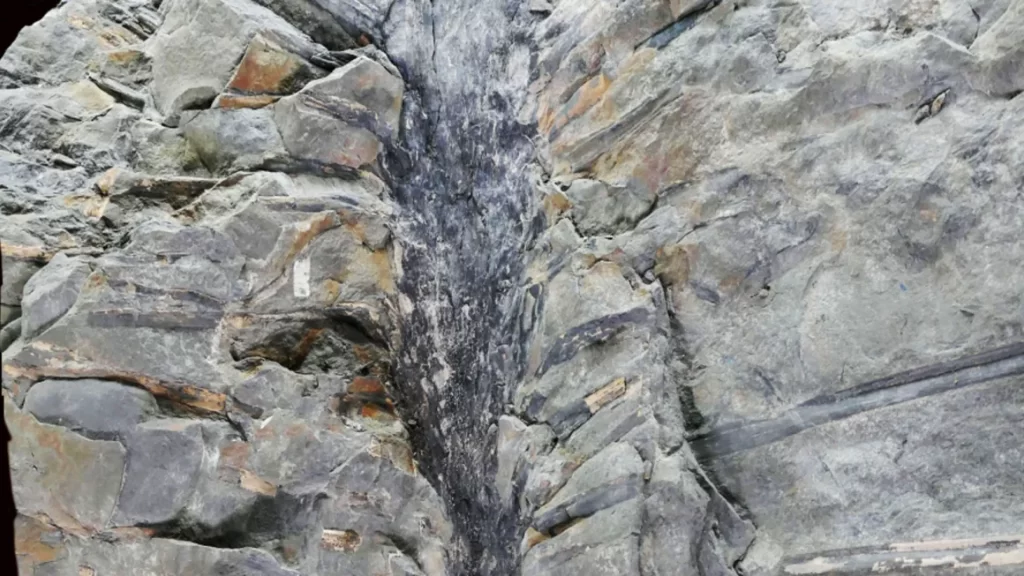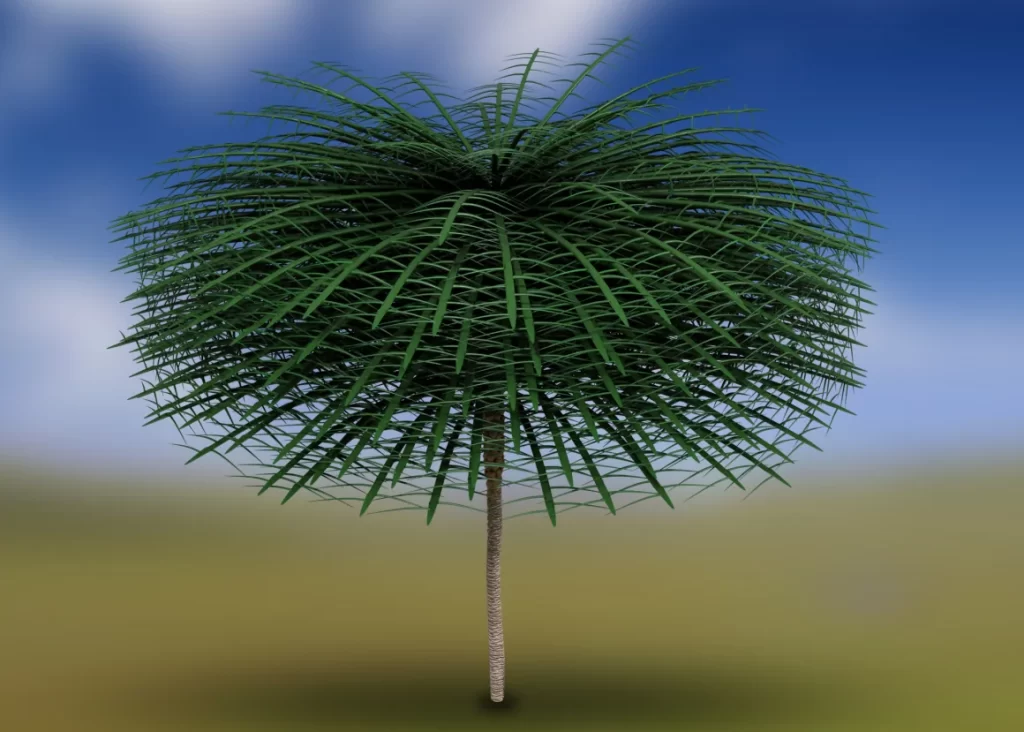News
Unearthed Treasures: A Glimpse into Earth’s Ancient Forests Revealed by Rare Fossils
In the vast narrative of Earth’s geological history, trees stand as silent sentinels, witnessing the eons unfold. Their existence, dating back hundreds of millions of years, has long been shrouded in mystery due to the scarcity of tangible evidence. However, a recent discovery of 3D tree fossils, entombed in the earth by a seismic event 350 million years ago, has left scientists astounded, offering a unique window into the nascent stages of Earth’s forests and rewriting our understanding of the planet’s ancient landscapes. Let’s find out with nowglas.

Nestled in a quarry in the Canadian province of New Brunswick, these remarkable fossils, described in a study published in Current Biology, provide not only a surprising visual spectacle reminiscent of a Dr. Seuss illustration but also invaluable insights into a period of Earth’s history that has long been elusive. According to Robert Gastaldo, a paleontologist and sedimentologist leading the study, these fossils are “literally little windows into deep-time landscapes and ecosystems.”
The tale of this botanical time capsule began in 2017 when coauthors Olivia King and Matthew Stimson stumbled upon the first ancient tree during fieldwork. Subsequent excavations unearthed four more specimens of the same plant, now identified as a new species named “Sanfordiacaulis” in honor of Laurie Sanford, the quarry’s owner. What makes these fossils exceptional is their preservation—the branches and crown leaves remain attached to the trunk, a rarity in the plant fossil record spanning over 400 million years.

Gastaldo highlights the scarcity of well-preserved ancient tree specimens, emphasizing that only five or six trees in the Paleozoic era have been documented with their crowns intact. The newfound fossils fill crucial gaps in the incomplete fossil record, shedding light on the early architecture of trees that once graced the planet.
The unearthed Sanfordiacaulis, with its fern or palm-like appearance, challenges preconceived notions about the evolution of tree species. What adds to the intrigue is the preservation of over 250 leaves around the trunk of the most complete specimen, each leaf extending approximately 5.7 feet (1.7 meters). These ancient trees, having experienced a seismic upheaval, were buried swiftly at the bottom of an ancient rift lake, preserving them in an unusually detailed manner.
Peter Wilf, a geosciences professor and paleobotanist at Pennsylvania State University, describes the find as a relic from a time period where tree fossils are exceptionally rare. The Sanfordiacaulis serves as a milestone in understanding the evolution of early forest structures, providing a glimpse into the intricate architectures that paved the way for Earth’s current biodiversity.
The uniqueness of these fossils extends beyond their scientific significance. To Olivia King, who discovered the fossils, the Sanfordiacaulis bears an uncanny resemblance to Dr. Seuss’s whimsical creations. With a massive crown at the top and a narrowing trunk, the trees present a surreal and enchanting spectacle reminiscent of the Lorax’s fantastical world.

While these peculiar trees may evoke a sense of wonder, they also convey a broader message about the experimental nature of evolution. Matthew Stimson suggests that the Sanfordiacaulis represents a “failed experiment of science and evolution.” The trees, having thrived in the early Carboniferous period, signify an era when life was diversifying, making its way from water to land.
Beyond the allure of the past, fossils like the Sanfordiacaulis play a crucial role in deciphering Earth’s future. Gastaldo emphasizes that these fossils indicate the trees of that period were exploring ecological niches beyond previous understanding. This suggests that, much like early invertebrates, plants were experimenting with adaptations to their environment.
The seismic event that led to the fossilization of these trees provides not only a snapshot of Earth’s ancient landscapes but also geological evidence of the planet’s dynamic systems at play. As scientists unravel the mysteries locked within these fossilized remnants, they continue to paint a vivid picture of life 350 million years ago. Each discovery offers not only a journey into the past but also a compass guiding us toward a deeper understanding of the ever-evolving tapestry of life on Earth.
A Glimpse into Earth’s Past: Understanding Ancient Forests through Rare Fossils
Trees, the stoic sentinels of Earth, have witnessed the unfolding drama of our planet for hundreds of millions of years. Despite their ancient lineage, evidence of these early botanical architects has been scarce, leaving gaps in our understanding of Earth’s evolutionary tapestry. A recent discovery of 3D tree fossils, buried alive by an earthquake 350 million years ago in the Canadian province of New Brunswick, is rewriting the narrative of Earth’s ancient forests, offering a tantalizing glimpse into a world long gone.
The fossils, detailed in a study published in Current Biology, not only captivate with their unique Dr. Seuss-like appearance but also provide scientists with a rare opportunity to explore the architecture of trees during a pivotal period in Earth’s history. Led by paleontologist and sedimentologist Robert Gastaldo, the study unfolds a story preserved by time, offering a precious window into landscapes and ecosystems that have long vanished.
In 2017, Olivia King and Matthew Stimson, coauthors of the study, stumbled upon the first of these ancient trees during fieldwork in a New Brunswick quarry. Subsequent excavations revealed four more specimens, leading to the identification of a new species named “Sanfordiacaulis.” Unlike many ancient tree fossils, these specimens boast a remarkable preservation of branches and crown leaves still attached to the trunk, a rarity in the paleontological record.
See more: Revitalizing London’s Skyline: BT Tower’s Grand Transformation into a Hotel Haven
Gastaldo emphasizes the scarcity of such well-preserved ancient tree specimens, noting that only five or six trees from the Paleozoic era have been documented with their crowns intact. The Sanfordiacaulis fossils offer critical insights into the early architecture of trees, filling gaps in the incomplete fossil record and unraveling mysteries that have perplexed scientists for centuries.
The unearthed Sanfordiacaulis, with its fern or palm-like appearance, challenges preconceived notions about the evolution of tree species. Notably, the most complete specimen boasts over 250 preserved leaves around its trunk, each leaf extending an astonishing 5.7 feet (1.7 meters). These fossils, entombed by a seismic landslide triggered by an earthquake, offer a detailed snapshot of a moment frozen in time.
Peter Wilf, a geosciences professor and paleobotanist at Pennsylvania State University, describes the Sanfordiacaulis as a relic from a time period with almost no tree fossils. The find represents a milestone in understanding the evolution of early forest structures, providing crucial insights into the complex architectures that laid the groundwork for Earth’s existing biodiversity.
Beyond their scientific significance, these fossils carry a whimsical charm. Olivia King likens the Sanfordiacaulis to creations straight out of Dr. Seuss’s fantastical world, with a massive crown at the top and a narrowing trunk—a surreal and enchanting spectacle reminiscent of the Lorax’s whimsy.
Yet, amid the wonder, the Sanfordiacaulis represents more than a relic of Earth’s past. Matthew Stimson suggests that these trees, thriving during the early Carboniferous period, signify an era when life was diversifying and making its way from water to land. The peculiar nature of the Sanfordiacaulis, a “failed experiment of science and evolution,” challenges our understanding of how life adapted to the environment during this transformative period.
Looking beyond the allure of the past, these fossils play a crucial role in deciphering Earth’s future. Gastaldo points out that the Sanfordiacaulis indicates trees of that period were exploring ecological niches beyond previous understanding, much like early invertebrates experimenting with adaptations. The seismic event that led to the trees’ fossilization not only provides a snapshot of ancient landscapes but also unveils geological evidence of Earth’s dynamic systems at play.
As scientists delve deeper into the mysteries locked within these fossilized remnants, they continue to paint a vivid picture of life 350 million years ago. Each discovery, like the Sanfordiacaulis, serves not only as a journey into the past but also as a guiding compass, leading us toward a profound understanding of the ever-evolving tapestry of life on Earth.
See more: Unveiling the Hidden Threat: Sinking Cities Accelerate Sea Level Rise Impact
